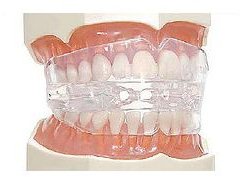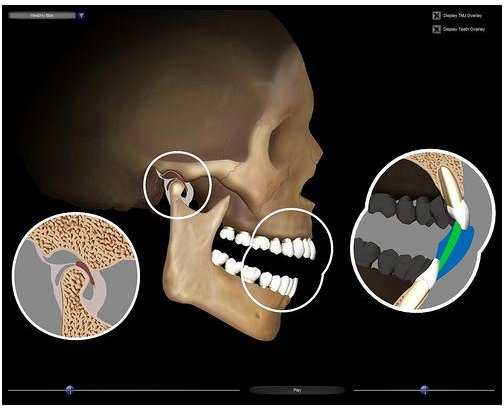Learn How to Treat TMJ (Temporomandibular Joint Disorder)
There are many treatments available for TMJ (Temporomandibular Joint Disorder). TMJ disorders can be quite painful. TMJ problems can make it difficult to eat, swallow and yawn. The pain can be caused by problems with the jaw muscle’s, jaw ligaments or the jaw joint itself.
TMJ can be caused by disease, trauma (such as a punch to the jaw or impact from an auto accident), wear and tear due to aging or grinding the teeth or jaw clenching.
TMJ is common for people with Ehlers-Danlos syndrome or mitral valve prolapse syndrome, with TMJ being caused by connective tissue disorders. Conditions linked to TMJ would be magnesium deficiency (low levels), migraine’s, tinnitus or vertigo.
Diagnosis
There are many treatments available for TMJ, however, determining the cause will help with proper treatment. A consultation with a dentist who is experienced in TMJ problems, can evaluate you for a proper diagnosis and treatment plan that is tailored to your needs. Most treatments are simple and can be done at home.
Your dentist will most likely order a CT scan or an MRI. A CT scan can provide detailed images of the bones involved in the joint. An MRI can reveal problems with the joints disc.
Images

How to Treat TMJ
A conservative approach is key when it comes to TMJ. A soft food diet with no difficulty to chew foods can help to bring some immediate relief. Along with no gum chewing, avoiding yawning too wide and lots of fluid will all help to rest the jaw. Exercises to stretch the jaw muscle and moist heat to relax the muscles will also help and are simple things that can be done at home. Also warm moist compresses placed on the jaw joint can help to relieve pain by easing the tension in the jaw.
One procedure available is called “washing out” the joint of the jaw, which involves two injections. One needle injects the cleaning solution, and the second injection removes the solution from the jaw joint. This procedure can provide immediate relief to TMJ sufferers. Also pain medications can later be injected, or a cortisone injection can help relieve swelling and reduce pain.
Various splints are also available such as a flat plane splint, modified hawley splint, repositioning splint or a tension suppressive system splint, to name a few.
Acupuncture is available as pain management for TMJ, however, its effectiveness is inconclusive. Some patients experience some pain relief for a short period of time.
Conclusion
A consultation with a good dentist specializing in TMJ disorders, who will help you to establish a treatment plan that is especially suited to your exact needs will help to ensure a stable bite which can be very vital in proper treatment for TMJ.
References
https://www.mayoclinic.com/health/tmj-disorders/DS00355/DSECTION=treatments-and-drugs (The Mayo Clinic)
https://www.tmj.org/site/content/tmjd-treatments (The TMJ Association)
Photo’s courtesy of Flickr.com:
https://www.flickr.com/photos/zensoft/4056416850/ (by Sensoft Studios)
https://www.flickr.com/photos/34777433@N02/3828189551/ (by Paul Kirby)
This post is part of the series: TMJ (Tempor
TMJ disorder information, diagnosis, treatments, surgical procedures and splint descriptions.
